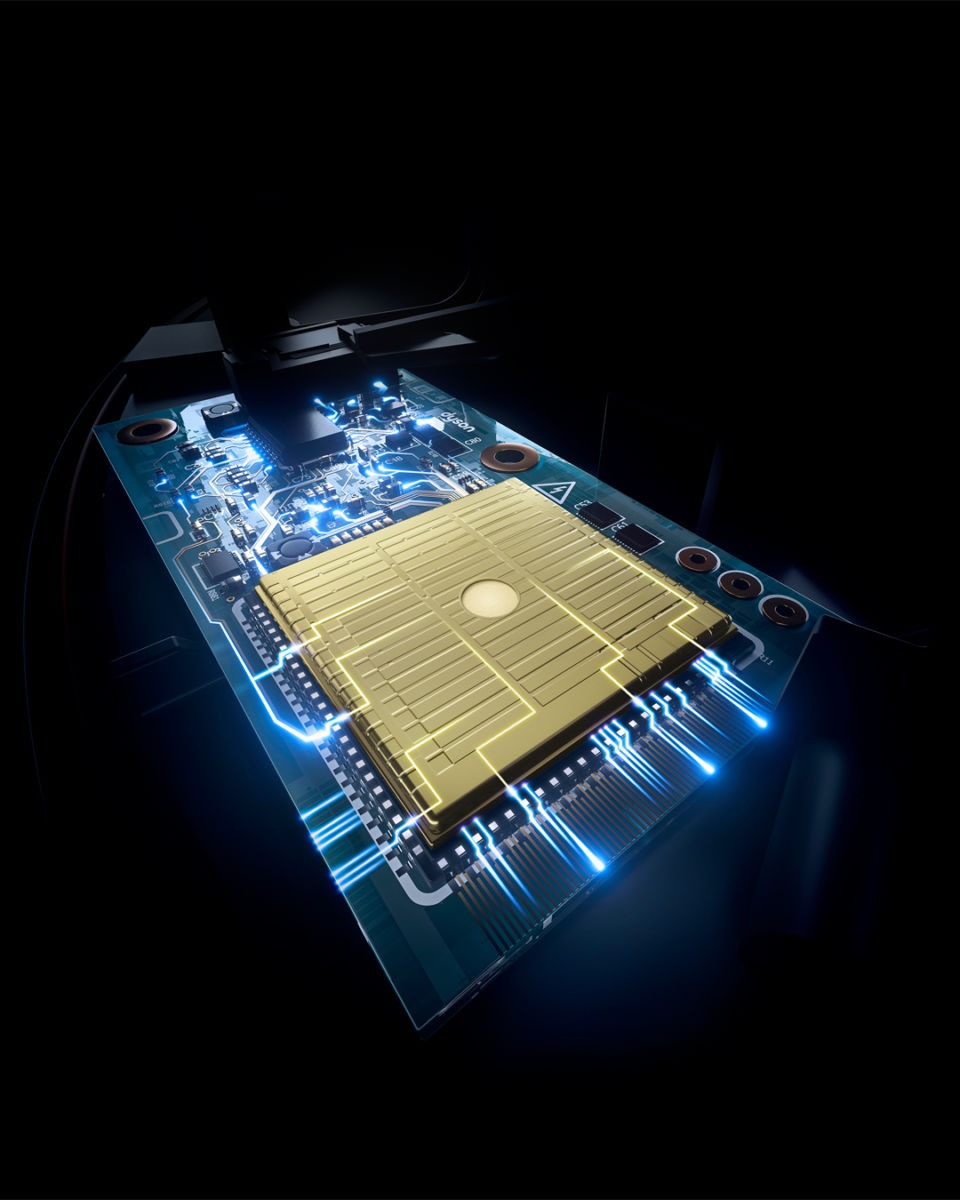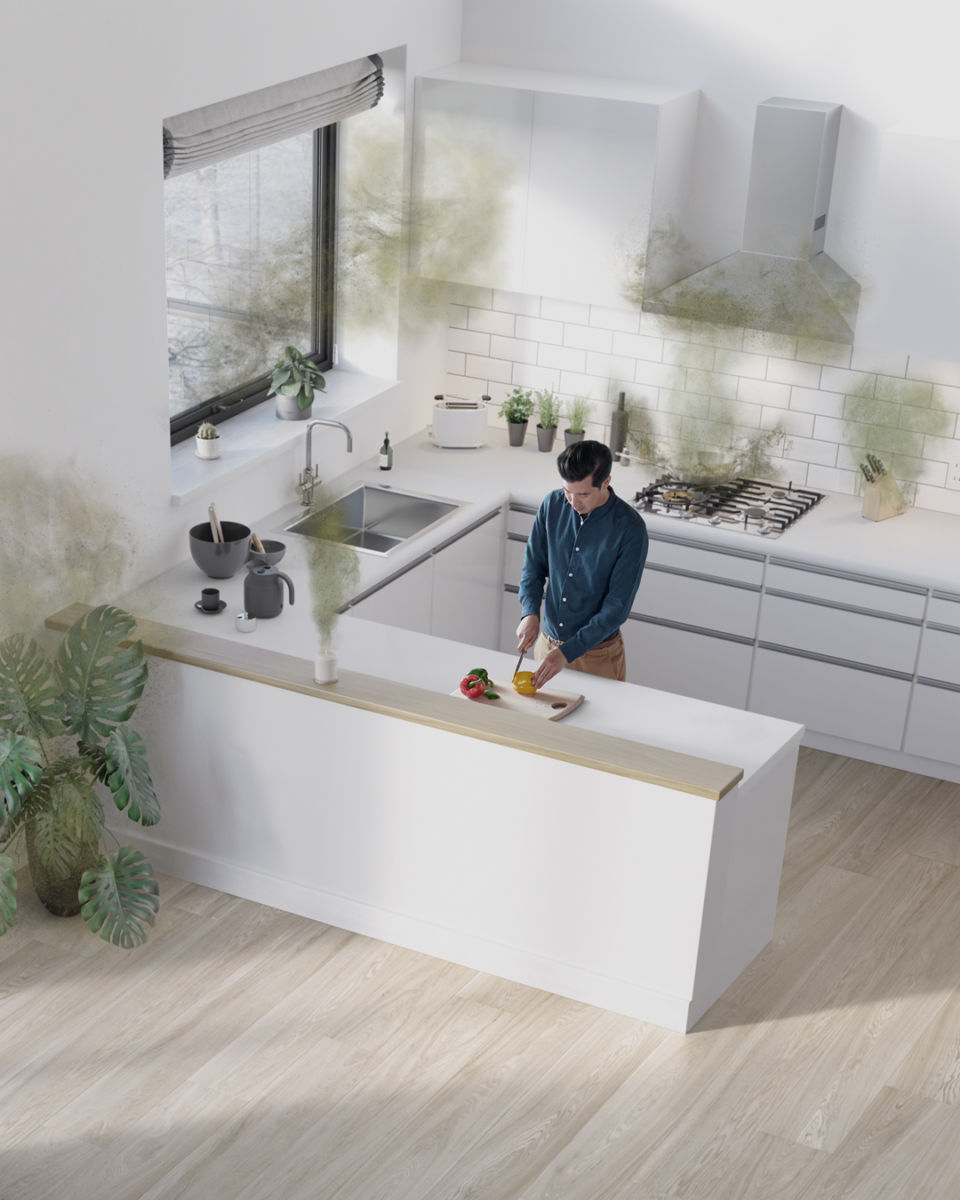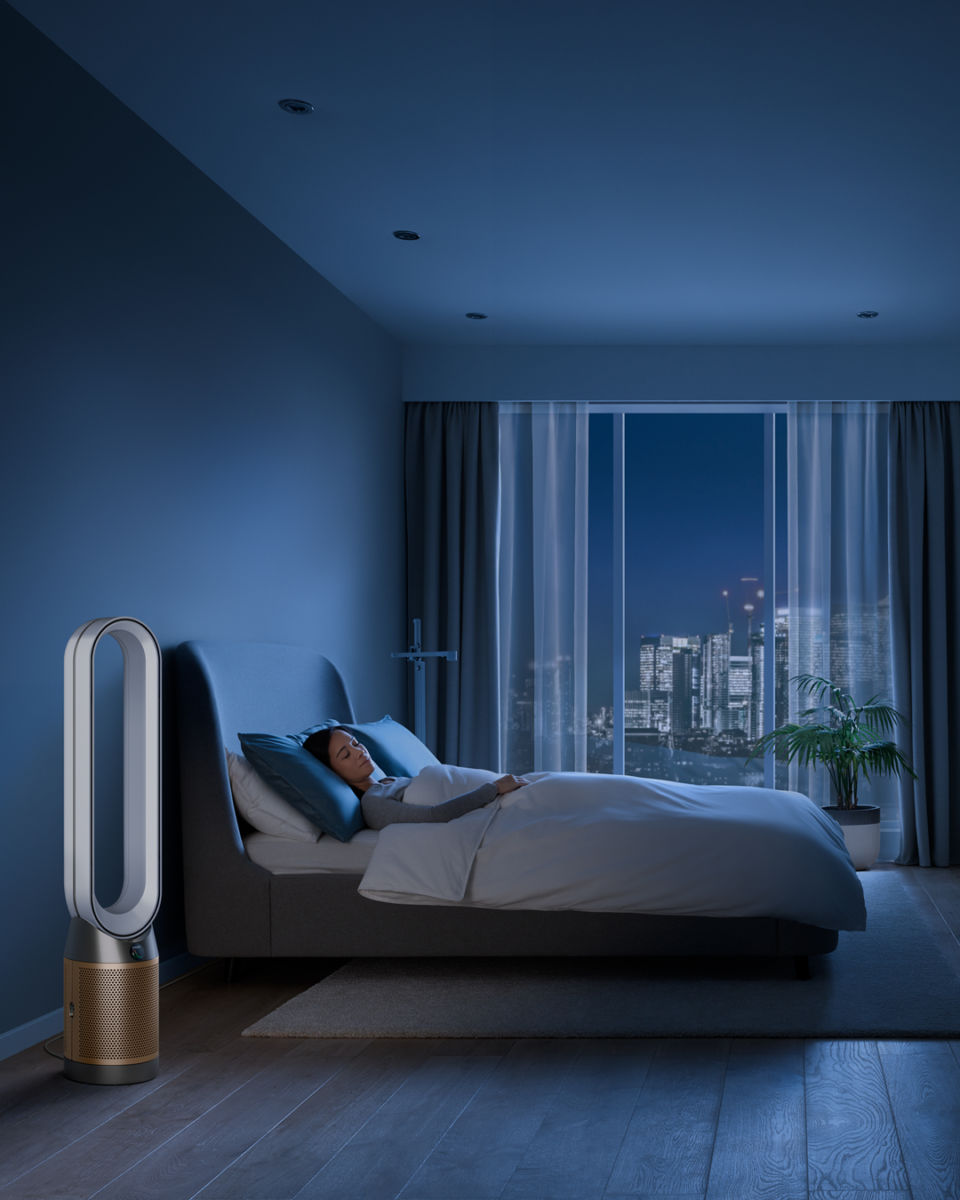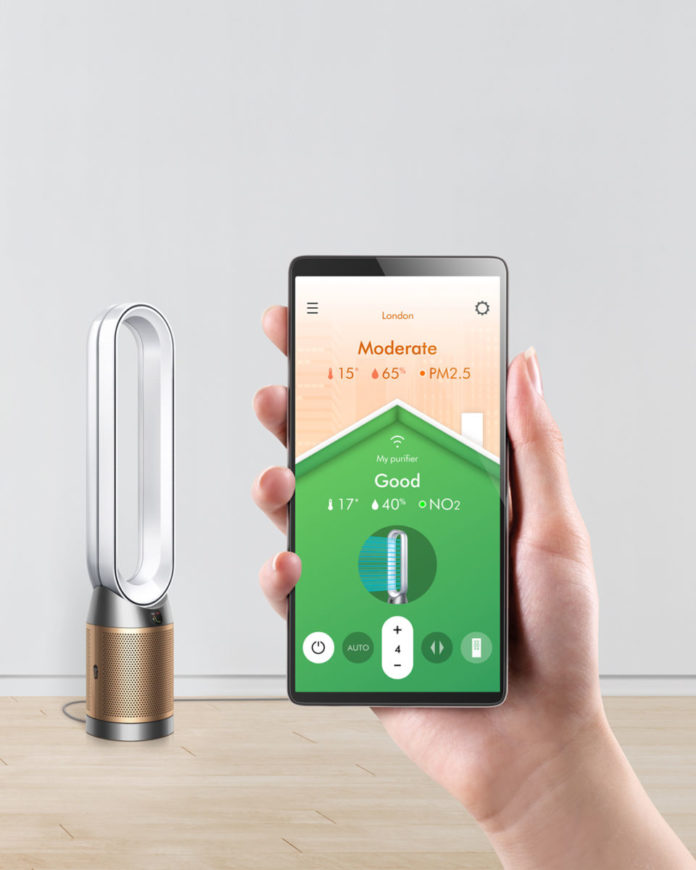Dyson unveiled its latest generation of purification machines with new solid-state formaldehyde sensing technology, designed to capture ultra-fine dust and allergens, even destroying potentially dangerous volatile organic compounds (VOCs) including formaldehyde.
Formaldehyde is a colorless gas pollutant, released by furniture and wooden products containing formaldehyde-based resins like plywood and fibreboard, insulating materials, and do-it-yourself products such as paint, wallpapers, varnishes, and household cleaning products. Being 500 times smaller than particles the size of 0.1 microns, it is particularly difficult to capture and if left undetected can lead to prolonged exposure due to continuous release of airborne chemicals, known as off-gassing.
While other gel-based formaldehyde sensors can deteriorate over time and are easily confused with other VOC pollution, Dyson’s new, solid-state formaldehyde sensor works alongside Dyson’s unique algorithm to precisely monitor formaldehyde levels- intelligently ignoring other gases which are detected by a dedicated VOC sensor.
“The off-gassing tendency of formaldehyde means that it can go undetected in a home for years. Dyson has engineered a machine that provides accurate and successful sensing, capture, and destruction of the pollutant. Our solid-state sensor doesn’t dry out over time, lasting the lifetime of the machine. The COVID-19 pandemic has raised global awareness about the air that we breathe and Dyson’s commitment to providing cleaner air through innovation and technology remains at the forefront of our mission,” says Alex Knox, vice president of environmental care at Dyson.

Tireless and ever-dissatisfied, Dyson engineers have also re-engineered the machine airflow pathways to achieve fully-sealed HEPA 13 standard filtration — not only ensuring that no air bypasses the filter but blocking any potential leak points through which dirty air might enter the airflow. This means Dyson’s latest purifiers remove 99.95% of particles as small as 0.1 microns. Improvements in the airflow journey have made the Dyson Purifier Cool Formaldehyde 20% quieter, without any compromise on purification performance to reduce unwanted noise at home.
The indoor generation
Every day, humans breathe up to 9,000 litres of air, and even before the COVID-19 pandemic spent as much as 90% of their time indoors. As our homes increasingly become spaces where we work and exercise as well as sleep and play, the quality of the air we breathe in all aspects of our routine is non-negotiable.
There are a number of indoor pollution sources, which release pollutants like PM10, PM2.5, VOCs, NO2 and formaldehyde into the air. Sources of pollution are present in all aspects of our daily lives, whether that be PM2.5 emitted when cooking, VOCs released from cleaning products or the continuous off-gassing of formaldehyde from our living room furniture. Tirelessly improving and constantly iterating, Dyson’s new Purifier Formaldehyde range reflects the latest technology in three core areas: sensing, filtration, and acoustics.

Precise formaldehyde sensing and destruction
In addition to the existing particle, NO2, VOCs, temperature and humidity sensors, the integration of an intelligent formaldehyde sensor ensures precise sensing of the pollutant for the lifetime of the machine. Formaldehyde sensors can be gel-based and may deteriorate gradually as they dry out over time. Using an electro-chemical cell, the Dyson formaldehyde sensor does not dry out and its unique intelligent algorithm cross-checks data every second, selectively sensing to avoid confusion with other VOCs.
Dyson’s Selective Catalytic Oxidisation (SCO) filter continuously destroys formaldehyde at a molecular level. The catalytic filter has a unique coating, with the same structure as the Cryptomelane mineral. Its billions of atom-sized tunnels are the optimal size and shape to trap and destroy formaldehyde, breaking it down into tiny amounts of water and CO2 . It then regenerates from oxygen in the air to keep destroying it continuously without ever requiring replacement.

Full-machine HEPA filtration
In Dyson’s new purifiers, it’s not just the filter that meets HEPA H13 standard, but the whole machine. It captures 99.95% of particles as small as 0.1 microns such as allergens, bacteria, H1N1 virus, pollen and mould spores. Dyson engineers took a forensic approach to achieving a fully-sealed machine, creating high pressure seals at an additional 24 critical points to prevent dirty air from bypassing the filters and carrying pollutants back into the room.
Dyson Purifier Cool: Acoustically engineered to be 20% quieter
Dyson engineers increased efforts to further reduce the sound output of the Dyson Purifier Cool while maintaining purification performance. Through an iterative design, test, build process managed at the Dyson Malaysia Development Centre’s in-house acoustics chamber, the machine was re-engineered to be 20% quieter. To achieve this noise reduction, Dyson engineers refined the overall airflow path by widening the aperture (slot in which the air exits the machine) and its geometry was improved. This reduced the amount of friction between the air and surface of the machine, resulting in less sound. Noise was reduced from 64 to 61 decibels at max fan speed.

Air Multiplier Technology
Using Dyson Air Multiplier™ Technology, the machine can project purified air to every corner of the room. Auto mode enables the machine to maintain a preferred room temperate and air quality levels, while the machine can be entirely controlled by the Dyson Link App and activated by voice control.
Engineered for real homes
Dyson Purifier machines are engineered for real spaces. The industry standard for testing air purifiers measures performance using a laboratory test conducted in a compact chamber 12m² in size, with a ceiling fan to circulate the air and one sensor inside the room measuring air quality. For more representative testing, Dyson’s POLAR test is based on a larger room size of 27m² with no added fan and uses eight sensors in the corners of the room and one sensor in the centre to collect air quality data.
Range
| Machine / Functions | Dyson Purifier Cool TP07 | Dyson Purifier Cool Formaldehyde TP09 |
| Fan | X | X |
| Formaldehyde Sensing & Capture | X | |
| Colorways | White and Black | White / Gold |
| SRP | PHP36,500 | PHP40,500 |
Other features
Guarantee: Dyson Purify machines have a 2 year parts and labour guarantee.
Remote control: A magnetised remote control can be neatly stored on top of the machine.
Sleep time: Pre-set intervals ranging from 15 minutes to 9 hours.
Dyson Link app: Available for iOS and Android, the Dyson Link app enables you to track indoor pollution, temperature and humidity levels and provides maintenance support and troubleshooting
Voice Control: Compatible with Google Home, Alexa and Siri.
Night time mode: Monitors and purifies using its quiet settings, with a dimmed display.
Availability: Dyson demo stores and www.dyson.ph
